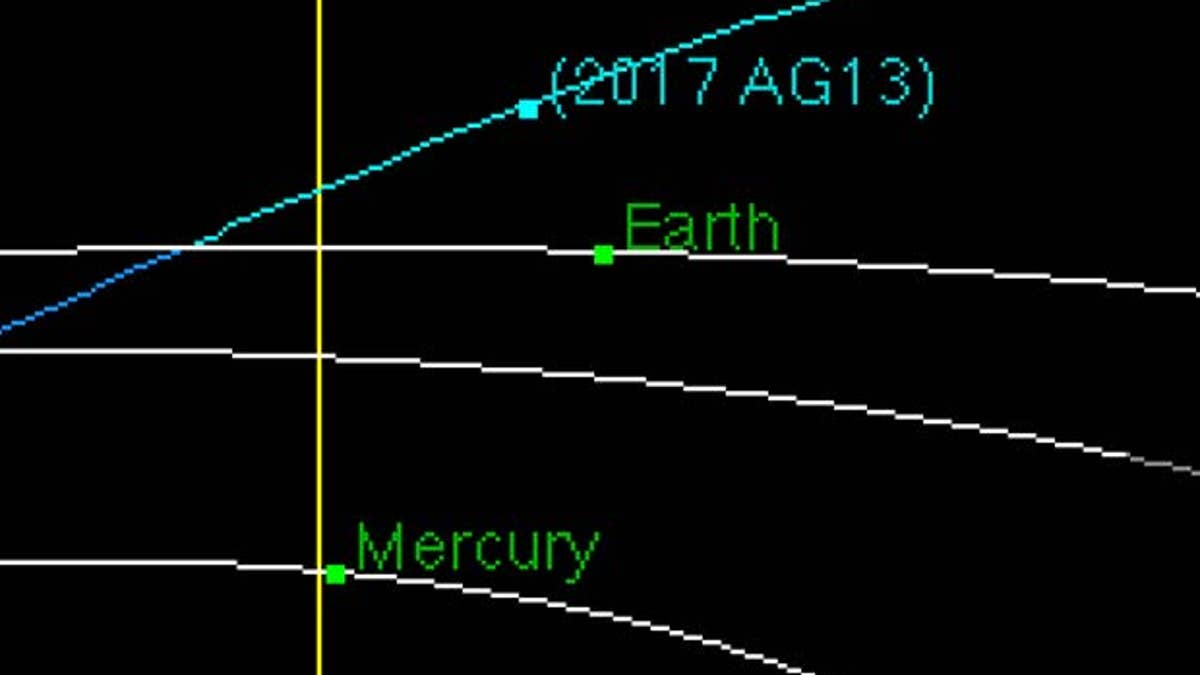
Orbit diagram of asteroid 2017 AG13, which flew by Earth on Jan. 9, 2017. (Credit: NASA/JPL-Caltech)
A smallish asteroid zoomed past Earth Jan. 9, just two days after scientists first spotted the space rock.
The asteroid, known as 2017 AG13, flew by our planet at just half the distance from Earth to the moon at 7:47 a.m. EST. (On average, the moon lies about 239,000 miles from Earth.) You can learn more about today's flyby in this video of asteroid 2017 AG13 from Slooh.com , which includes details on the space rock from Slooh Community Observatory astronomer Eric Edelman.
2017 AG13 is thought to be between 36 and 111 feet wide, according to astronomers at the Minor Planet Center in Cambridge, Massachusetts. For perspective, the object that exploded over the Russian city of Chelyabinsk in February 2013, injuring more than 1,000 people, was thought to be about 65 feet wide. [In Images: Potentially Dangerous Asteroids]
2017 AG13 was discovered by the University of Arizona-based Catalina Sky Survey on Saturday (Jan. 7). Initial observations of the object show that it takes about 347 Earth days to circle the sun, on an orbit much more elliptical than that of Earth: 2017 AG13 gets as close to our star as 0.55 astronomical units (AU), and as far away as 1.36 AU.
More From Space.com
One AU is the average distance from Earth to the sun — about 93 million miles. Earth's orbit is nearly circular; the planet never gets closer to the sun than about 0.98 AU, or farther away than 1.02 AU or so.
Surprise flybys like the one just performed by 2017 AG13 are far from unprecedented. Millions of asteroids are thought to cruise through space in Earth's neighborhood, and astronomers have detected just 15,000 of them to date.
The good news is that the vast majority of the behemoths — the ones capable of causing damage on a global scale if they were to hit Earth — have been discovered, and none of them poses a threat for the foreseeable future, NASA researchers have said.
Follow Mike Wall on Twitter @michaeldwall and Google+ . Follow us @Spacedotcom , Facebook or Google+ . Originally published on Space.com.
